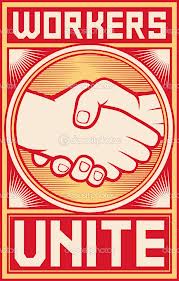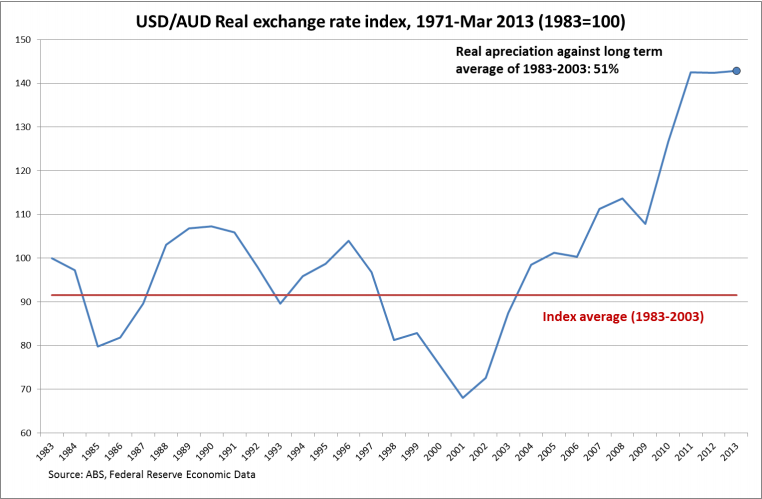
The ABC reported late yesterday that:
Hundreds of Holden workers have accepted a three-year wage freeze in order to prevent the company closing its production line in Adelaide’s northern suburbs in 2016.
In a series of ballots today, 1700 employees at the Elizabeth plant were effectively voting to keep their jobs and continue producing the carmaker’s Cruze and Commodore models.
A planned 3 per cent wage increase from November will now be deferred as the carmaker looks to save $15 million in labour costs in order to remain viable and keep building cars in Australia.
Holden workers were also asked to approve changes to sick leave, overtime and shift breaks.
John Camillo from the Australian Manufacturing Workers Union did not give exact numbers, but said a clear majority voted in favour of the proposals.
“It was a tough choice. They’ve made the right decision,” he said.
“The workers here made a clear majority vote to support the next generation of vehicles here in Australia, to make these vehicles here at the Elizabeth operation.
“I thought it was going to be very, very close but these people have made the right choice. It was a very, very strong vote in regards to a positive ‘yes’.”
Mr Camillo became emotional while announcing the outcome of the ballot and says it has been a tough time for workers.
“It’s a hard ask but these changes with regard to working overtime, flexible working arrangements don’t hurt anybody. They’ll get used to that,” he said.
“[With] the decline of the auto industry, there’s not much of a bargaining chip you have and while we sat down and discussed as much as we could, the ball’s not in our court.
“There is a future in the automotive industry if we all work together in getting there.
“The next tick in the box will be the politicians, whether they’re prepared to support GMH.”
The outcome of the vote does not guarantee the plant’s future, with Holden’s survival now resting on a new government deal to be negotiated after the Federal election to secure funding for the period from 2016 to 2022.
The final decision about the company’s future will then be made by General Motors in Detroit.
Mr Camillo conceded workers had no other option than to accept the changes if they wanted to keep their jobs.
“What do we do? Do we say no, we’re not prepared to change, fold our arms and stare the company down? Not only [would] Holden close but the rest of the components sector [would] close,” he said.
A proposed 10 per cent pay cut by the company was earlier taken off the table after strong resistance from the union.
The plant’s work force was cut by 400 in July after workers accepted redundancy packages.
Holden workers in Victoria were advised by the union to abstain from the vote, which would not affect their pay and conditions.
This is a far more important example of what the nation needs to be doing than it appears. The press has widely represented this as some kind of isolated issue with manufacturing but it isn’t. It is “exhibit a” in how to engineer a real exchange rate reduction, which is what is required to get Australia through the end of the mining boom.
The real exchange rate is the combination of the currency and wages and a reduction is achieved when the nominal exchange rate falls, pushing up tradable prices, but those price rises are not then passed into salary rises. Hence it is no small thing to achieve, given it implicitly involves workers accepting falling standards of living.
Why bother you might ask? Because, after many years of booming prices, wages, assets and the currency, we are so uncompetitive that all businesses that are exposed to tradable prices begin to close and unemployment to rise. It has become so extreme in our case that even some of our natural endowment – such as natural gas – is stuck in the ground because we are too expensive to extract it. Here is Australia’s real effective exchange rate versus the US, courtesy of Ross Garnaut:

Against all other developed economies we look the same.
Regular readers will know that I’m no fan of slash and burn salary austerity but we have no natural right to endlessly increasing wages either.
The irony of our current situation is that as wages begin to fall at the leading edge of our uncompetitiveness problem, our elites are doing absolutely nothing to encourage burden sharing among the wider population. Even Labor, which has expressed these issues better than the Libs via its post-mining boom “transition management” rhetoric, has shied completely away from describing the real depreciation needed. Meanwhile, the RBA is doing everything in its power to inflate other major input costs, such as land prices, instead of innovating policy for the times that would enable lower interest rates and currency, without the bloating of credit growth and specufesterism.
The process of real depreciation will happen one way or another as we move beyond the mining boom. We could do voluntarily, as Holden’s workers are doing, sharing the burden evenly and pulling together to make the nation more productive. Or, we can do it involuntarily, in a mad scramble for unsustainable income gains that boosts input costs again, sheds more production, and fractures the nation via recession.
Our elites have set us upon the latter course.

